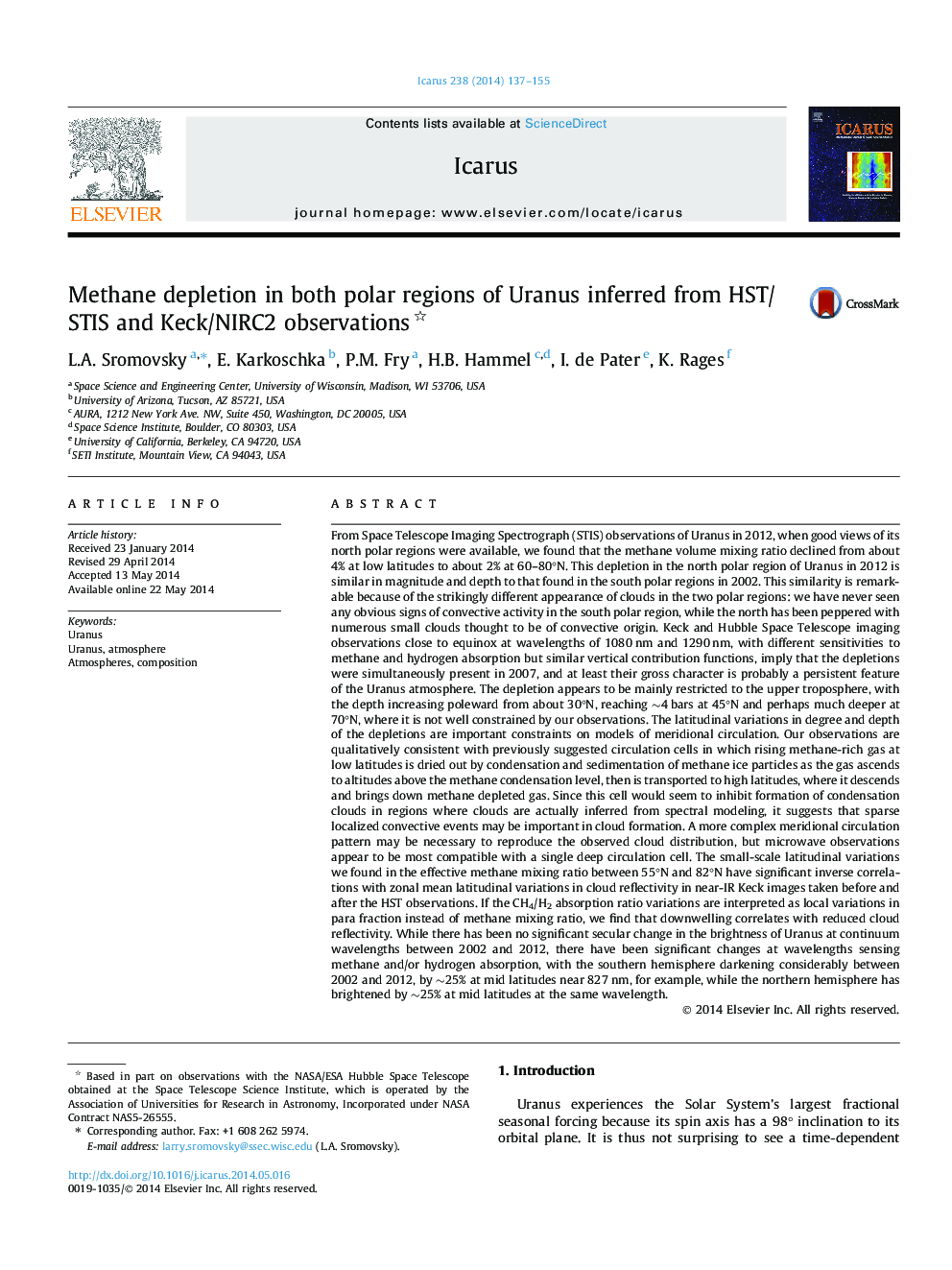| Article ID | Journal | Published Year | Pages | File Type |
|---|---|---|---|---|
| 1773129 | Icarus | 2014 | 19 Pages |
Abstract
From Space Telescope Imaging Spectrograph (STIS) observations of Uranus in 2012, when good views of its north polar regions were available, we found that the methane volume mixing ratio declined from about 4% at low latitudes to about 2% at 60-80°N. This depletion in the north polar region of Uranus in 2012 is similar in magnitude and depth to that found in the south polar regions in 2002. This similarity is remarkable because of the strikingly different appearance of clouds in the two polar regions: we have never seen any obvious signs of convective activity in the south polar region, while the north has been peppered with numerous small clouds thought to be of convective origin. Keck and Hubble Space Telescope imaging observations close to equinox at wavelengths of 1080 nm and 1290 nm, with different sensitivities to methane and hydrogen absorption but similar vertical contribution functions, imply that the depletions were simultaneously present in 2007, and at least their gross character is probably a persistent feature of the Uranus atmosphere. The depletion appears to be mainly restricted to the upper troposphere, with the depth increasing poleward from about 30°N, reaching â¼4 bars at 45°N and perhaps much deeper at 70°N, where it is not well constrained by our observations. The latitudinal variations in degree and depth of the depletions are important constraints on models of meridional circulation. Our observations are qualitatively consistent with previously suggested circulation cells in which rising methane-rich gas at low latitudes is dried out by condensation and sedimentation of methane ice particles as the gas ascends to altitudes above the methane condensation level, then is transported to high latitudes, where it descends and brings down methane depleted gas. Since this cell would seem to inhibit formation of condensation clouds in regions where clouds are actually inferred from spectral modeling, it suggests that sparse localized convective events may be important in cloud formation. A more complex meridional circulation pattern may be necessary to reproduce the observed cloud distribution, but microwave observations appear to be most compatible with a single deep circulation cell. The small-scale latitudinal variations we found in the effective methane mixing ratio between 55°N and 82°N have significant inverse correlations with zonal mean latitudinal variations in cloud reflectivity in near-IR Keck images taken before and after the HST observations. If the CH4/H2 absorption ratio variations are interpreted as local variations in para fraction instead of methane mixing ratio, we find that downwelling correlates with reduced cloud reflectivity. While there has been no significant secular change in the brightness of Uranus at continuum wavelengths between 2002 and 2012, there have been significant changes at wavelengths sensing methane and/or hydrogen absorption, with the southern hemisphere darkening considerably between 2002 and 2012, by â¼25% at mid latitudes near 827 nm, for example, while the northern hemisphere has brightened by â¼25% at mid latitudes at the same wavelength.
Related Topics
Physical Sciences and Engineering
Earth and Planetary Sciences
Space and Planetary Science
Authors
L.A. Sromovsky, E. Karkoschka, P.M. Fry, H.B. Hammel, I. de Pater, K. Rages,
